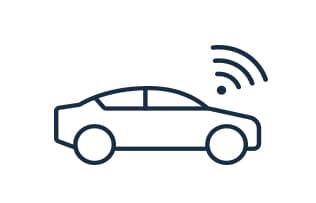





Our Services
With thousands of hours of training each year, our technicians are equipped and prepared to address any concern you may have about your vehicle. Using clear, easy-to-understand terminology, your Service Advisor will walk you through the recommended service for your vehicle. That way you know exactly what's going on with your vehicle, allowing you to make informed decisions.
Services We Offer
OIL CHANGE

Today’s technologically-advanced engines require proper lubrication to maintain max fuel efficiency, reduce wear & improve performance. More than ever, it’s important to bring your vehicle to the people who know it best.
Learn MoreTIRES

You can trust that you’ll get the right tires and know your vehicle is in good hands having our Service technicians install or switch them out for you. We’re always surveying deals to make sure you get brand name tires at the best price.
Learn MoreACCESSORIES

Genuine OEM GM accessories are designed specifically for your Chevrolet, Buick or GMC to enhance vehicle characteristics you love. These accessories are warranty protected, ensuring satisfaction and peace of mind.
Learn MoreI had an excellent experience working with Darren at Laird Wheaton GMC. Darren has been with the dealership for eight years and nearly 17 years with GM overall, and that experience really shows. His communication was clear, timely, and honest throughout the entire process. When I negotiated the price down as far as possible, he…
Kyle Whittaker
Great service
Gary Schulenberg
I had a very pleasant and welcoming experience with Steven S in sales. Certainly a gentleman with a very friendly manner. Will certainly come back and deal with him again.
Tom McGregor
Always have had a pleasure purchasing cars here. Ross and Steven S are great to work with and have been good to me over the years.
Sanjay Valand
Welcome to our Service Department
At Laird Wheaton Chevrolet Buick GMC Cadillac, our highly qualified technicians are here to provide exceptional service in a timely manner. From oil changes to transmission replacements, we are dedicated to maintaining top tier customer service, for both new and pre-owned car buyers! Allow our staff to demonstrate our commitment to excellence.
Whether it's routine maintenance or a complex repair, you've come to the right place. Our Service technicians are the only experts factory-trained to know your vehicle inside and out. With Genuine OEM Parts and specialty equipment, you have the added peace of mind that comes with demanding the very best.



Mechanical Breakdown Protection Kia Thunder Bay, Ontario

Details
1 Available on select Apple and Android devices. Service availability, features and functionality are subject to limitations and vary by model and/or vehicle configuration, device and the plan in which you are enrolled. Device data connection required. Visit onstar.ca for more details.
Link
https://www.onstar.com/ca/en/new_vehicles/
2 Apple and the Apple logo are trademarks of Apple Inc., registered in the U.S. and other countries. App Store is a trademark of Apple Inc., registered in the U.S. and other countries.
3 Google, Google Assistant, Android, Google Play, Android Auto and other related marks and logos are trademarks of Google LLC. Use of these trademarks is subject to Google Permissions.
Details
4 App functionality and feature availability vary with vehicle equipment and trim level. Data connection may be required and data charges may apply. Requires an active service plan and working electrical system. Terms and limitations apply. Visit onstar.ca for more details.
Link:
https://www.onstar.com/ca/en/new_vehicles/
Details
5 Capabilities vary by model and/or vehicle configuration and service plan, may require the purchase of factory installed equipment and/or may not be available on select models. Visit onstar.ca for vehicle availability. Message and data rates may apply. Requires active service, email address on file and enrollment in Vehicle Diagnostics. Not all issues will deliver alerts. On-Demand Diagnostics requires a paid service plan.


